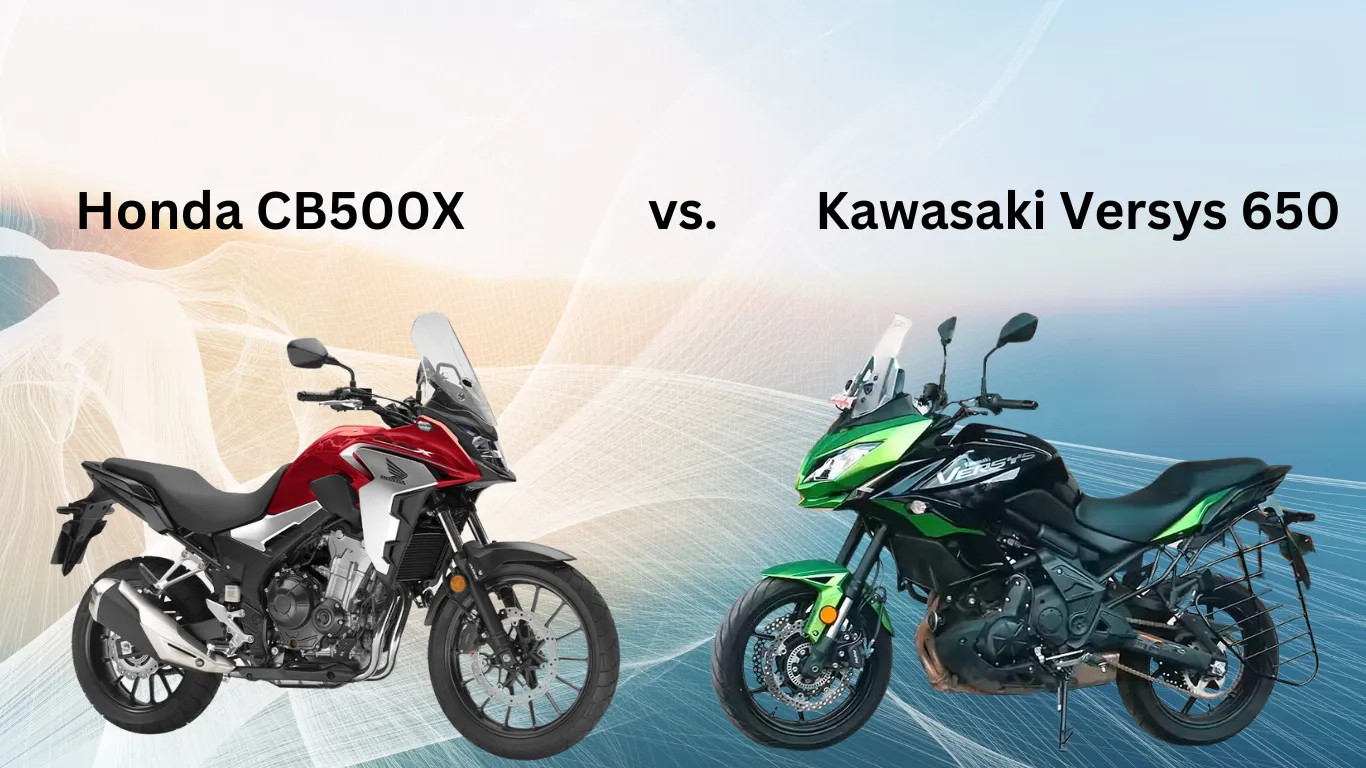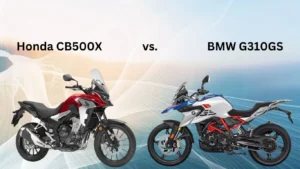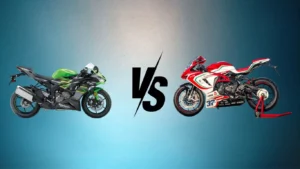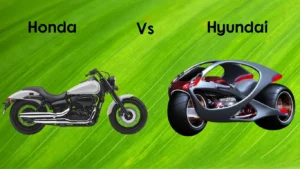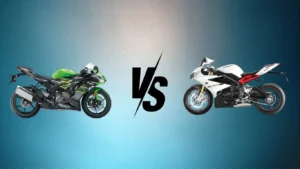Deciding on the perfect bike can be challenging, right? It’s a big piece of machinery that you’d be investing in; it’s only natural that you’d want to make the best choice. Ideally, your selection should offer a satisfying balance between cost, maintenance, parts availability, and, most importantly, comfort.
In this article, we’ll carry out a comprehensive bicycle comparison. We’re zooming in on two popular mid-range bikes, comparing their features head-on to ease your decision-making process. By the time we’re through, you’ll have a clear understanding of which might be your ideal ride.
Introduction: Exploring the Mid-Range Motorcycle Market
The mid-range motorcycle market offers an extensive array of options. These bikes provide a solid balance of performance and affordability, making them an appealing choice for many riders. Whether you are a seasoned biker looking for an upgrade or a novice on the brink of owning your first motorcycle, comprehending the distinguishing features of each model is crucial, ultimately helping you get the most value.
The Balance of Power and Affordability
Mid-range motorcycles, as the term suggests, occupy the middle ground between entry-level bikes and high-end models. They offer a compelling blend of power, versatility, and affordability. Such bikes typically feature engines in the range of 500cc to 800cc, providing enough power for highway speeds or light touring, while still manageable by less experienced riders. Notably, this category is where many manufacturers implant their most advanced features, knowing that the riders are often looking for a noticeable step up from entry-level options.
Variety and Versatility
The mid-range motorcycle market is quite diverse, offering a bike to suit almost every taste and requirement. From sporty designs for the adrenaline junkies to adventure models for the explorers, cruisers for those who value comfort over speed, and even street bikes for urban commuters, the choices are virtually unlimited. Several models possess an excellent balance of urban and long-distance capabilities, making them ideal for riders needing a versatile motorcycle.
What to Expect in the Mid-range Segment?
- Affordable Pricing: Even though these bikes provide a noticeable improvement in performance over entry-level motorcycles, they are reasonably priced, often falling within the range of $6,000 to $10,000.
- Superior Performance: Mid-range bikes typically come with better engines, suspension, and braking systems than their entry-level counterparts.
- Advanced Features: From ABS brakes to advanced infotainment systems, riders may find that mid-range bikes often include some of the latest and greatest features in the motorcycle industry.
- Availability of Parts: Due to the vast popularity, finding spare parts or aftermarket upgrades for mid-range bikes is typically quite convenient.
Design and Styling: Aesthetics That Reflect Your Style
Talking about design and styling, it’s evident that our chosen motorcycles clearly reflect their individual brands’ ethos. Both bikes possess distinctive aesthetics and styling cues, which significantly contribute to their appeal in the mid-range market. Let’s dive deep into the style analysis of these two charismatic motorcycles.
Exterior Finish and Build Quality
A bike’s exterior finish and build quality tell a lot about its design sense. Our first bike, with its glossy paint and high-quality plastics, exudes a premium feel. Its clean lines and minimalist design make it a favorite amongst modern riders. In contrast, the second bike leans more towards a rugged and bold look. Its matte finish, coupled with sturdy metal components, embodies the classic cruiser style.
Seats and Riding Position
Riding comfort is highly influenced by the seat’s design and the riding position. The first bike’s stepped, cushioned seat and upright riding position tailor to even long-distance rides. On the other hand, the second bike, with its broad, flat seat, and laid-back riding stance is perfectly tuned for cruising around the city.
Lights and Instrumentation
Another noticeable styling attribute is the motorcycle’s lights and instrument cluster. Our first bike opts for a futuristic look with its sleek LED headlights and taillights. The modern, fully-digital instrument console adds to its high-tech feel. In contrast, the second bike offers a retro-inspired circular headlamp and analog-digital combo cluster, showcasing a more traditional appeal.
Performance: Unleashing the Power on the Open Road
Cost of
When you’re saddling up on a mid-range ride, performance is everything. You’re not just aiming for leisure, you’re looking for a bike that can smoothly transition from city streets to winding backroads. With this in mind, let’s delve into the performance characteristics of these two mid-range bikes: how their engines roar, their transmission handling, and lastly, their mileage.
Engine Capacity and Output
The heart of any motorcycle’s performance lies in its engine. A good mid-range bike can offer a sweet spot between power and fuel economy. When comparing our two motorcycles, consider the engine displacement and power output. While both are likely to provide ample power for cruising or spirited riding, one may offer better linear power delivery or a more satisfying exhaust note. You should also consider the type of fuel injection system, which can impact both performance and fuel economy.
Transmission and Handling
Another key determining performance factor is how the bike handles. This is a combination of the transmission system, suspension setup, and bike weight. A bike with a smooth and responsive transmission provides a pleasing ride, particularly if you spend a lot of time in traffic. However, a rugged suspension and a light body can make for an agile ride that’s great for twisty roads.
Mileage
Finally, don’t forget to check out the mileage of the bikes. With fuel prices constantly fluctuating, a bike with superior mileage can net you significant savings in the long run. Remember, a motorcycle’s performance isn’t just about ride quality and power—it’s also about how effectively it uses fuel.
Ownership: Crunching the Numbers
When it comes to motorcycle ownership, you’re operationally dealing with two main costs: the initial purchase and ongoing expenses. Being a mid-range bike owner means you’re invested in a machine that offers solid performance without hitting the high realms of top-tier models in price and upkeep. Let’s delve into what it takes to own one and even save money in the long run.
Initial Purchase Price
The initial purchase price for a mid-range motorcycle can vary by brand, model, and market. With more features and better performance, expect to pay a little more for your motorcycle. It’s a serious investment and you’ll need to budget accordingly. While the price tags of top-tier models may seem daunting, remember that a mid-range motorcycle also brings value to the table in terms of durability and quality.
Insurance Cost
An important but often overlooked aspect of motorcycle ownership is insurance cost. For mid-range motorcycles, this cost tends to be reasonable. It’s crucial, though, to shop around for the best insurance rates and coverage for your particular model.
Registration and Licensing
Another inevitable cost is associated with registration and licensing. Each state has different requirements, so you’ll need to do some research to get an accurate estimate. Typically, mid-range motorcycles come with moderate registration and licensing fees.
Depreciation
Like any vehicle, your motorcycle will depreciate over time. However, depreciation rates are often lower for mid-range motorcycles compared to their high-end counterparts. This is something to consider if you plan to sell your motorcycle in the future.
Ongoing Maintenance and Repairs
Maintenance is an inevitable part of owning any vehicle. Mid-range motorcycles, however, often come with lower maintenance costs than higher-end models. This stems from the fact that they’re designed for durability and longevity. You’ll have regular expenses like oil changes and tire replacements but, with regular care and attention, your bike can avoid major repair costs.
Running Costs
Delving into the running costs is an important step when comparing mid-range bikes. Though the initial purchase may seem hefty, understandably, finances won’t be a burden when you’re aware of the running costs. This includes expenses like fuel, routine service, replacement parts, and even parking fees. These costs, while potentially minor in isolation, could add up significantly over time and impact your overall budget for your bike ownership experience.
Mid-range bikes typically score good points here, as they tend to be more affordable to run. The parts are usually cost-effective, and the servicing schedule is manageable, meaning your pockets won’t constantly feel the pinch. Also, bikes in this range typically have reasonable fuel efficiency, adding to the affordability factor. Make sure to consider these aspects, comparing the two bikes under consideration side by side, for an accurate understanding of what it will cost to keep them on the road.
Fuel Efficiency: Saving Money and the Environment
As you navigate the world of mid-range motorcycles, an important consideration is fuel efficiency. Not only does this impact your wallet, but it’s also a crucial factor when you evaluate your environmental footprint. High fuel efficiency can translate into lower costs and less impact on our planet. Let’s delve into this a bit more.
The Implications of Fuel Efficiency
When a motorcycle possesses great fuel efficiency, it can travel longer distances on less fuel. This means fewer fill-ups, saving you money over time. But more than just cost savings, high fuel efficiency also contributes to lower emissions, reducing the environmental impact of your motorcycle rides.
Understanding MPG (Miles Per Gallon)
To gauge the fuel efficiency of motorcycles, we primarily use the term “miles per gallon” or MPG. In essence, a higher MPG signifies that your bike can travel more miles on a single gallon of fuel. Consequently, motorcycles that boast high MPG figures are typically more fuel-efficient, economical, and environmentally friendly.
Considering Fuel Type
The type of fuel your bike requires also plays a part in fuel efficiency. Most mid-range bikes use regular unleaded gasoline. However, some can operate on premium fuel, which can offer improved performance but might not contribute to better mileage, and cost more at the pump. So, it’s essential to consider the type and price of fuel required before you finalize your decision.
Impact of Riding Style and Maintenance
Your riding style and bike maintenance habits significantly affect fuel efficiency. Aggressive driving with high-speed and rapid acceleration tends to consume more fuel. Regular maintenance like timely oil changes, keeping tires at the correct pressure, and ensuring the engine is in optimum condition can substantially boost the mileage you get from each gallon.
Maintenance: Keeping Your Ride in Top Shape
Every motorcyclist knows maintaining your bike is more than just a money-saving strategy, it’s an integral part of the riding experience. Ensuring your mid-range motorcycle continues to perform at its peak means dedicating time to routine maintenance, immediate repairs and precautionary measures. Here we delve into the important aspects of maintaining a mid-range motorcycle for long-lasting performance.
Basic Checks and Scheduled
Servicing Investing in regular servicing and timely overhaul of equipment is non-negotiable when it comes to motorcycle maintenance. Keep a close eye on your bike’s oil levels, tire pressure, and brake functionality. A mid-range bike may not necessarily require the advanced care higher-end models demand, but basic checks are key to its longevity and safety.
Quality of Spare Parts
Prevent potential damage to your motorcycle by opting for quality spare parts. Mid-range motorcycles usually have a wider selection of quality, affordable spare parts readily available. Choosing genuine, high-quality replacements ensures your bike performs optimally while avoiding unnecessary wear and tear.
Proactive Maintenance
The best way to deal with potential problems is to prevent them altogether. Regular cleaning, chain maintenance, and protective measures such as using a bike cover can greatly enhance your motorcycle’s lifespan and performance. Remember, the longevity of a mid-range motorcycle heavily depends on how well you take proactive steps to maintain it.
Tire Maintenance
Moreover, tire maintenance is a fundamental aspect you can’t afford to overlook. The longevity and performance of your tires depend vastly on how well you maintain them. The condition of your tires directly influences your bike’s fuel efficiency, handling, and most importantly, your safety. Tire care is not just about replacing worn-out tires but also about regular rotation and alignment. This ensures even wear and tear, extending the lifespan of your tires and boosting your bike’s performance.
Remember, the key here is consistency. Taking the time to check your tire conditions before each ride might seem tedious, but it could potentially help spot a problem before it turns critical. Also, keep in mind that different riding conditions require different types of maintenance. Off-road adventures and long-distance rides would need more frequent tire inspection due to the rigor of the journey. Engaging in regular tire care and maintenance will ensure that you really get the most out of your mid-range motorcycle.
Proper Storage
Let’s talk about storing your bike properly. In your quest for bike ownership, an often overlooked but important aspect is how you store your motorcycle when it’s not in use. The way you store your motorcycle can have a significant impact on its longevity and performance, especially if you live in an area with harsh weather conditions.
Whether you opt for indoor or outdoor storage, proper storage techniques are key. A high-quality motorcycle cover can help protect the bike from dust, rain, and UV rays, while indoor storage solutions can offer additional protection from extreme temperatures. Meanwhile, preventative measures like disconnecting the battery and filling up the gas tank can help preserve the bike’s operational components when stored for extended periods. Understanding these storage basics can save you potential repair costs in the long run and keep your bike in pristine condition.
Comfort: Cruising in Style and Comfort
Taking a cruise on a mid-range motorcycle should be more than just an adrenaline rush; comfort plays a substantial role in the overall riding experience. Thankfully, with the widespread improvements in motorcycle technology, cruising with ease and comfort are now more achievable. But what really constitutes comfort? Let’s drill into the specifics of your ride’s comfort.
Rider Seat: Your Throne on the Road
Undeniably, your seat comes as the first point of contact with your motorcycle and can either make or break your journey. A comfortable seat must provide enough cushioning to prevent soreness and numbness during long rides. Consider the seat width, padding quality and material when choosing a mid-range motorcycle for your needs. Special seat materials, like gel or air cell padding, combine comfort and durability, making the ride much smoother.
Riding Posture: Alleviating Stress Points
A suitable riding posture is another determining factor of comfort. A motorcycle should offer a comfortable stance, where you don’t have to lean too forward or backward. A good motorcycle will have an optimal arrangement of the seat, handlebars, and foot pegs, which can alleviate any unwanted pressure on your wrists, back, and knees. Furthermore, switching to wider handlebars can give you greater control and alleviate shoulder and neck strain.
Vibration Dampening: Minimizing the Rumble
Motorcycles inherently vibrate due to their engine operation. Excessive vibrations, however, can be a notable discomfort during long rides. Therefore, invest in a motorcycle that incorporates a good vibration dampening system. This reduces the vibrations transmitted from the engine to the handlebars, footpegs, and rider’s seat. Some mid-range motorcycles employ counter-balancer shafts or rubber mountings to minimize vibrations.
Wind Deflection: For a Calm and Quiet Ride
Lastly, wind deflection is a subtle yet critical aspect of riding comfort. This is especially true for riders who frequent high speeds or long distances. Efficient windscreen design can redirect air currents around the rider, reducing air pressure on your chest, and contributing to a quieter, more comfortable ride. Do consider the adjustment range of the windscreen too, as it should cater to riders of differing heights.
Technology and Features: Innovations That Enhance Your Ride
In the world of motorcycle advancements, technology and features play a crucial role. Today, modern rides are more than just mechanical beasts; they are innovative machines packed full of thrilling aspects that immensely enrich your riding experience. We’ve got your back as we delve into the treasure chests that these mid-range bikes offer.
In-Built GPS Navigators
Believe it or not, an integrated GPS system has become more of a necessity than a luxury in many bikes. It assists riders in finding their way around unfamiliar terrains, exploring adventurous trails, or just getting around town. This amenity, found in some of the latest mid-range bikes, adds a significant convenience factor to your travels.
Advanced Suspension Systems
The role of an efficient suspension system cannot be undermined in ensuring a smooth and comfortable ride. Advanced suspension features in mid-range bikes allow you to glide seamlessly over rough terrains, absorb shocks, and maintain proper handling and control. Remember, a solid suspension system isn’t merely about comfort; it’s equally about safety.
Smartphone Connectivity
As our lives become increasingly interconnected, having smartphone connectivity in your bike is becoming standard. This feature lets you sync your mobile device with your motorcycle, enabling hands-free calls, access to music, messages, and real-time notifications. With this, you get to keep in touch with the world without compromising the thrill of your ride.
Keyless Ignition
The advantage of keyless ignition is manifold – enhanced security, ease of use, and time-saving during busy schedules. This feature, once considered premium, is gradually filtering down to mid-range bikes. It’s worth considering for that extra layer of convenience and protection.
These are but a few of the remarkable features making modern mid-range motorcycles a cut above their predecessors. As motorbikes continue to evolve, their technology and features promise to make your rides even more exciting, convenient, and safe.
Safety: Prioritizing Your Well-being on the Road
When it comes to riding, your safety on the road should never be an afterthought. The bike you choose should seamlessly integrate safety features that prioritize your well-being. Let’s delve into some key safety considerations when comparing these two mid-range motorcycles.
ABS (Anti-lock Braking System)
An ABS is a crucial safety feature in a motorcycle because it prevents the wheels from locking up (skidding) during braking. While comparing the two bikes, consider which integrates a reliable ABS and how it performs under diverse riding conditions.
Traction Control System
Like ABS, a Traction Control System (TCS) is a useful feature for maintaining control of the bike, especially on slippery surfaces. It helps retain grip by preventing the rear wheel from spinning excessively. Check if either bike has TCS and if so, how effectively it works.
Riding Mode
Several motorcycles now feature different riding modes suitable for various conditions. These adjust factors like throttle response and power delivery, allowing you to tweak your bike’s performance based on weather or road conditions. Understand if the bikes you are comparing have this feature and how versatile the riding modes are.
LED Lights
LED lights are not only longer-lasting but are also brighter than traditional halogen lamps. A bike equipped with LED headlamps, tail lamps, and turn indicators will be more visible on the road, crucial for safety during night-time rides or low light conditions.
Tire Pressure Monitoring System
Maintaining optimal tire pressure is key for performance and safety. Some motorcycles incorporate a Tire Pressure Monitoring System (TPMS) which alerts the rider about any significant drop in tire pressure. When comparing the bikes, question if either has this safety feature.
Off-Road Capabilities: Exploring Beyond the Pavement
Though both mid-range bikes in question hail from reputable manufacturers, their off-road performance may significantly vary. This divergence largely depends on design elements, such as the ruggedness of tires, suspension quality, and ground clearance. Let’s take a closer look at these elements to understand better which bike offers superior off-road capabilities.
Tire Type and Traction The type of tires a bike employs plays a pivotal role in its off-road performance. Knobby tires are typically more ideal for off-road exploits as they offer superior traction on loose surfaces like gravel and sand. Dry, rocky terrain may demand a different type of tire, with a harder compound for extended durability. It would be imperative to compare the type of tires both bikes come with and assess their suitability for your intended off-road use.
Suspension Quality and Ground Clearance
The quality of a bike’s suspension system and its ground clearance also significantly influence its off-road performance. A good suspension system can absorb the shocks of uneven terrain, thereby providing a smoother ride and preserving the bike’s over time. Similarly, higher ground clearance allows bikes to traverse rugged terrain without damaging the undercarriage. You’ll want to consider these factors when assessing the off-road capabilities of each bike.
Ride Comfort and Control
When it comes to long off-road expeditions, comfort and control play quintessential roles. It’s crucial to consider how each bike handles while traversing an array of terrains. A bike equipped with precise steering and balance can keep your ride calm and confident even through a dense forest trail or steep hilly ascent, enhancing your overall control.
Equally essential is the bike’s comfort level. You wouldn’t want an aching back or sore wrists to ruin your journey, right? A motorcycle designed with an ergonomic rider’s seat and grip, and a vibration reduction mechanism can ensure you stay relaxed even after hours on an unpaved road. So, while comparing two bikes, check out their comfort and control features to finalize the one that would suit your off-road riding experience the best.
Long-Distance Riding: Comfort and Performance for Adventure
When it comes to looking at long-distance riding, it’s not just about the performance of the motorcycle, but also the comfort it provides. Long rides ask for endurance and maintaining a consistent pace, which can only be gained from a comfortable yet dynamic ride. So, let’s delve deeper into some key aspects that play a significant role in long-distance rides.
Engine Performance and Stability
A motorcycle’s engine performance is critical for long rides. The device you choose should run smoothly, even at high speeds, and efficiently throughout your journey. A stable engine will save you from frequent stops and also provide effortless navigation on various terrains. Always look at the torque and power figures while considering a motorcycle for long rides.
Ride Comfort
Rider comfort plays a vital role in choosing a motorcycle for long rides. The seat should be well-cushioned and wide enough to accommodate the rider comfortably. Additionally, the positioning of the handlebars should be such that your back, wrists and shoulder don’t strain. Choosing a motorcycle with proper ergonomics will help you tackle fatigue on those long journeys.
Fuel Efficiency and Capacity
Fuel efficiency can be a game changer when it comes to long-distance riding. The greater the mileage, the less frequently you will need to stop for refueling, resulting in a more non-stop, pleasant journey. Similarly, a larger fuel tank capacity means that your motorcycle can cover more distance before needing fuel again.
Reliability and Maintenance
On long journeys, you’d want your motorcycle to be dependable. Regular and proper maintenance helps ensure reliability. Choose a mid-range motorcycle that demands minimal maintenance, stays trouble-free for most of its life, and has readily available parts.
Conclusion
As we delve into the world of mid-range motorcycles, it’s clear that this market segment presents a diverse offering. Whether you’re searching for performance, comfort, fuel efficiency, or technology, these bikes can meet your needs while managing your wallet. The intricacies may seem overwhelming, but when you consider the long-term impact, it becomes an exciting endeavor.
The final choice, ultimately, rests on your preferences and what you value in a ride. Let this comprehensive guide inspire and enlighten your decision-making journey. After all, motorcycle ownership is more than just a mode of transportation, it’s a lifestyle that reflects your personality and zest for life.
